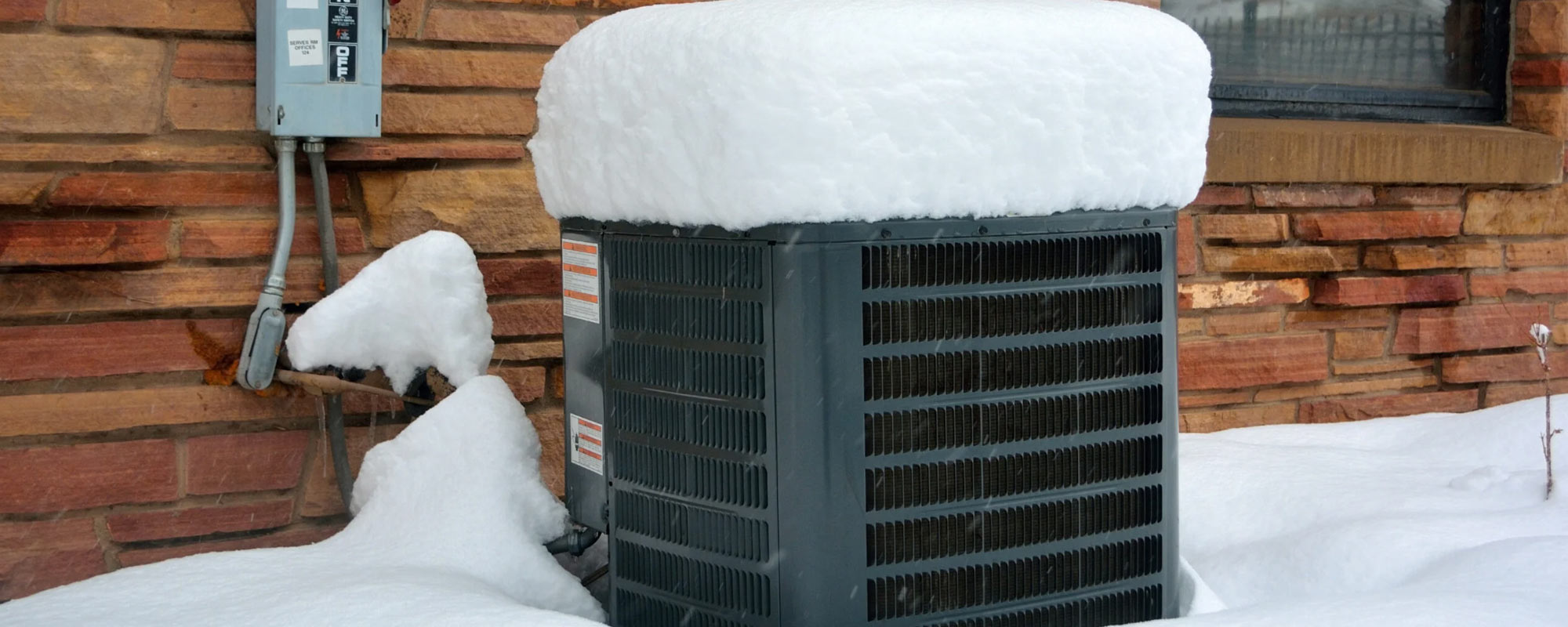Ten years ago, you’d be hard-pressed to find houses utilizing heat pumps in cold climates. Today, heat pumps are gaining popularity nationwide as efficient heating and cooling systems. Maine, one of the northernmost states, aims to install 245,000 heat pumps in homes by 2030 in its 2020 Climate Action Plan. Until recently, heat pumps were unsuitable for heating homes in cold regions due to how they operate.
How does a heat pump work? A heat pump utilizes refrigerants to absorb and move heat between a house and another source, such as the air, ground, or water. Every heat pump operates differently but all transfer heat, similar to air conditioners.
Air-source heat pumps, the most prevalent type, transfer heat between buildings and the outside air. In summer, heat pumps absorb heat from indoor air and move it out. In winter, heat pumps absorb heat from the outside air and bring it inside. Heat pump efficiency conventionally declines below 40°F, making them unsuitable heaters in cold regions. But modern cold climate heat pumps bring about new possibilities.
How does a heat pump work in cold weather?
Heat pumps operate like air conditioners in reverse in cold weather and transfer the outdoor air’s heat inside houses. The heat pump reversing valve mechanism and the outdoor air’s ever-present thermal energy make this operation possible in cold weather.
Although the outside air contains thermal energy in below-freezing temperatures, standard heat pumps lose efficiency below 40°F. The auxiliary heat system, typically electric heat strips in the air handler, automatically kicks on in low temperatures and supplements the heat pump’s heat. The EM heat setting can be manually activated during emergencies that render the heat pump inoperable. The emergency heat setting uses the same backup system as auxiliary heat but overrides the heat pump.

Upgrade Your Heating with Our Heat Pumps: Click to Explore!
Heat Pumps In Cold Climates - Busting Myths
Federal and state governments, most notably California, recognize heat pump installation as an approach to reducing fossil fuel usage. Northern states are beginning to jump on the heat pump bandwagon, too. In 2020, Massachusetts’ Global Warming Solutions Act Implementation Advisory Committee established the goal of converting one million homes dependent on oil and gas heating to heat pumps by 2030.
Though not a new technology, most people don’t know enough about electric heat pumps to convert their homes. Heat pumps have been around for decades and have gained a reputation for being inoperable in cold climates, requiring backup heating systems, and losing efficiency in cold weather. While there is some truth to these ideas, they are not absolute. Heat pumps have improved over the last decade, and some old views no longer apply.
Improvements to Heat Pumps for Cold Climates
Ten years ago, air-source heat pump systems were restricted to moderate climates. Older heat pumps could not transfer outdoor heat to homes in freezing conditions. These days, modern cold climate heat pumps are nearly 400% efficient above 47°F and 200% efficient down to 0°F. In fact, Colorado’s 2020 GHG Pollution Reduction Roadmap identifies conversion to heat pumps as a means to reduce the state’s greenhouse gas pollution and projects that 200,000 homes could be converted by 2030.
Several technological advancements have made heat pumps amenable to cold climates:
-
Cold climate refrigerants
-
Variable-speed inverter-driven compressors
-
Higher minimum operating temperatures
-
Higher HSPF ratings
-
Geothermal heat pumps
Cold climate refrigerant
Heat pump refrigerant absorbs and transfers heat through a pressurized system. The system’s pressure reduces when the outside temperature is low, and standard refrigerants won’t flow through the system. Cold climate heat pumps use a refrigerant with a lower boiling point to allow it to flow through the system when it gets cold outside.
Variable speed inverter-driven compressor
Heat pump compressors pump the refrigerant through the system, aiding the heat transfer process. New variable-speed inverter-driven compressors adjust their speeds and energy consumption according to outdoor conditions. They work harder on cold days when the heating demand is high and decrease output when temperatures are mild.
Minimum operating temperature
A heat pump’s minimum operating temperature (MOT) represents the lowest temperature at which it operates. Most cold-climate heat pumps operate down to -10°F, and the best ones work as low as -22°F. Cold climate heat pump manufacturers disclose the minimum operating temperatures on unit labels, heat pump packaging, or their website.
HSPF Rating
HSPF (heating seasonal performance factor) ratings measure heat pump heating efficiency and represent the amount of heat delivered compared to the energy consumed. Cold climate heat pumps have HSPF ratings above 8.
Geothermal Heat Pumps
Geothermal heating and cooling systems are consistently suitable for cold climates. The system’s underground pipes exchange ground heat with the home. The subsurface temperature remains around 55°F year-round, and the heat pump’s COP stays constant despite outdoor conditions.

Upgrade Your Heating with Our Heat Pumps: Click to Explore!
The Future with Cold Climate Heat Pumps
Heat pump cold climate technology allows more people access to efficient, eco-friendly heating and cooling than ever before. With the availability of government incentives through the Inflation Reduction Act, heat pumps are also more affordable than previously.
Currently, there are no established standards in the United States identifying units as cold climate heat pumps, and the current AHRI air-source heat pump testing standards do not measure heat pump performance below 17°F. Fortunately, changes are forthcoming. The Department of Energy’s Cold Climate Heat Pump Challenge seeks to further cold climate heat pump advancements and increase conversion by partnering with manufacturers and other stakeholders, and Energy Star’s 2023 air-source heat pump standards will include performance and efficiency markers for cold climate heat pumps.
Although heat pumps were once discouraged in cold climates, they could soon become the country’s preferred heating and cooling system.







